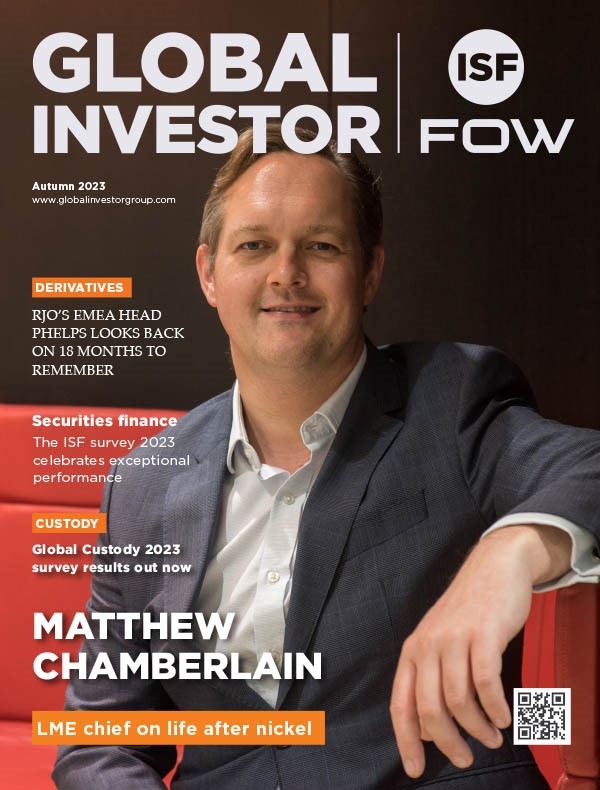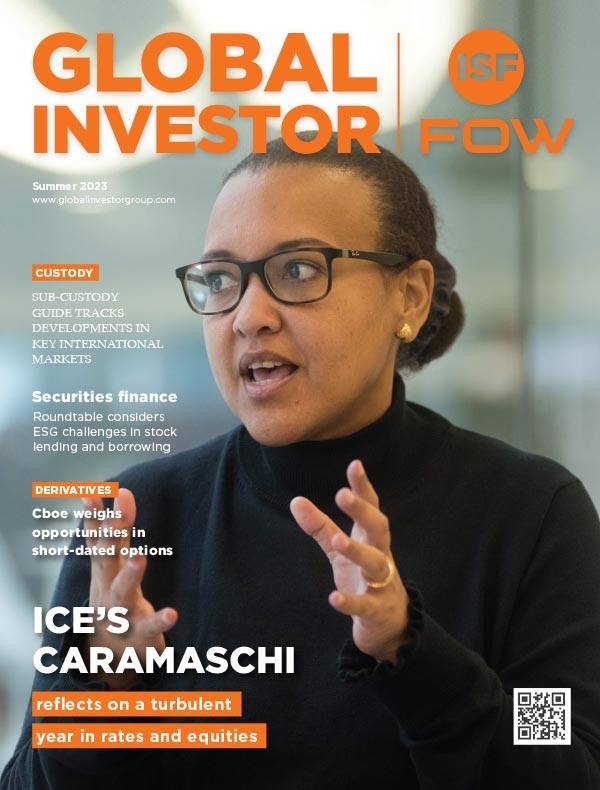Commerzbank: Managing collateral
Why has collateral management become so much more important in recent years?
The collateral question has now certainly become as important to the buy side as it has to the sell side. Before the crisis, when asset prices were appreciating steadily, volumes were also increasing and the OTC market was expanding at a considerable pace so there was not too much attention given to fragmentation in the post-trade world. CSA agreements allowed counterparties to a bank trade to pay bilaterally, and the margin requirements for cleared trades were pretty straightforward because the scope of central clearing did not cover many products.
In the wake of the financial crisis, as an increasing number of products move into the cleared space due to a raft of regulatory changes, the need for variation margin increases, bringing with it tougher operational challenges. The BCBS-Iosco requirements for non-cleared trades will only add to this when they come into play, imposing specific haircuts and requirements on eligible collateral which will make it much more important to identify and mobilise these eligible assets.
Even if the centralised treasury function is working well, as long as banks operate their businesses in silos, collateral will remain locked up and out of view. When you start to look at what you can pledge across silos then opportunities for efficiencies really emerge and the economic benefits available to firms that can find a holistic solution is huge. A recent report from Accenture and Clearstream estimated that the cost of banks internal fragmentation resulted in collateral efficiency in excess of $4bn from better collateral management.
What structural shifts are behind the greater emphasis on collateral management?
The context of all this is tougher operating environment for both sell and buy-side firms. Volumes have been poor since the financial crisis in most markets.
Equally challenging have been the constant raft of regulatory changes, where the high financial and even reputational cost of non-compliance means budgets for effecting these changes have significantly ballooned. Service providers have looked to hire devoted professionals that can simplify the on-boarding process and make the new rules simpler and less time consuming to implement for clients.
When you look to smaller banks or the shadow banking institutions operating in multiple markets it is very hard for these firms to keep up and afford this level of spending. They struggle to make the same financial commitment that larger banks like ours can to ensure that fully integrated post-trade servicing is in place. This creates a clear commercial case for exploring outsourcing.
At the same time firms are realising that they need not be as proprietary in their thinking about their technology as they once were. The prospect of outsourcing the middle and back office no longer feels like giving away the recipe of the secret sauce – they have accepted that they Are not differentiated in the back office, and the benefits of moving from a fixed to a variable cost model are significant.
Consider how distributed a lot of business for these firms is today. A large corporate or financial institution may use multiple service providers to provide a range of post-trade services in respect of clearing, collateral, custody, tri-party and settlement activities. And consider how distributed just the collateral piece might be – eligible assets spread over multiple locations and jurisdictions.
The complexity of the connectivity required to maintain that network translates into high costs for the middle and back office. If a firm could consolidate that activity to work with a provider that was able to service all those elements centrally the operational and technology savings can be significant.
Can you give an example of how you are bringing more efficient collateral management to clients?
We have been early adopters of many of the initiatives that have made clearing and settlement more efficient. We were among the first banks to offer Eurex’s OTC clearing service for interest rate swaps when that was introduced.
In June Eurex launched its cross product margining across exchange traded and OTC derivatives. Commer z b ank was one of the first clearing brokers to go live and offer this to its clients. The ability to crossmargin across these products can lead to potential cost reductions of 60% to 70% of your underlying collateral related costs.
Many banks are pushing integrated offerings like this one. How is yours different?
There is a difference between banks that historically have been driven principally by investment banking trading activities and those that have not. Commerzbank is in the second category – historically we have built our business around corporate services, which means we have developed a different culture and approach to purely investment bank-centred firms, one based around making the client central to how we measure success, placing considerable value on having long-term relationships and providing solutions which align our objectives with theirs.
When it comes to post-trade the difference is often between industrialised, process-driven approach at the larger investment banking-rooted firms and one starting with client requirements and modeling specific solutions based upon their existing capabilities and constraints. Recognising that one size does not fit all.
It is also worth observing the trend of many of the large banks trying to consolidate their investment banking operations with that of its investor service businesses in order to focus expertise in execution to post-trade servicing. Many of these mergers throw up considerable problems because often the culture, commercial cycles, technology platforms are very different between investment banks and asset servicers.
Found this useful?
Take a complimentary trial of the FOW Marketing Intelligence Platform – the comprehensive source of news and analysis across the buy- and sell- side.
Gain access to:
- A single source of in-depth news, insight and analysis across Asset Management, Securities Finance, Custody, Fund Services and Derivatives
- Our interactive database, optimized to enable you to summarise data and build graphs outlining market activity
- Exclusive whitepapers, supplements and industry analysis curated and published by Futures & Options World
- Breaking news, daily and weekly alerts on the markets most relevant to you



